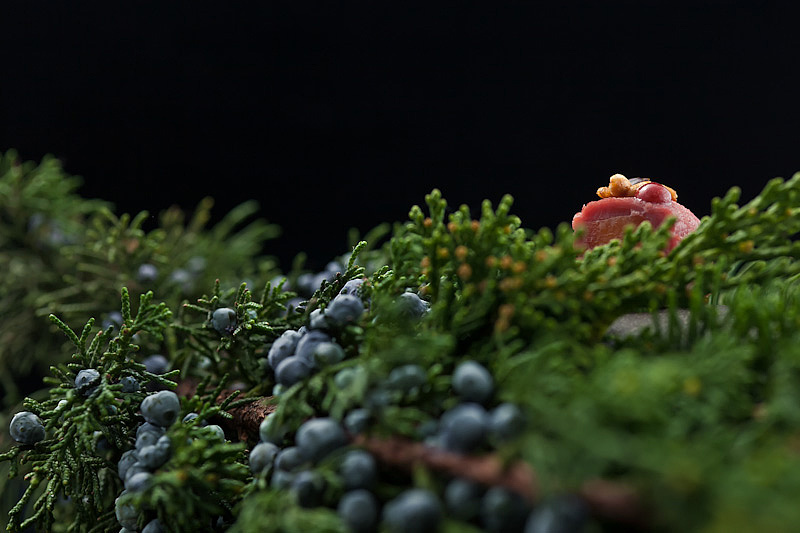
I’m sure I’ve admitted somewhere on here before (probably several times; I have a terrible memory ha HA!) that the original appeal of starting this project was “AWESOME WHITE POWDERS!”. I came at this sort of the same way someone who doesn’t know much about photography asks “What kind of camera do you use?” and assumes it’s the camera that’s doing the bulk of the work. I thought the crazy white powders, when added in just the proper amounts, would somehow mean I was super-terrific at cooking.
When I lived in New Zealand, I had a period where I really tried to explore the arena of selling artistic photography. I participated in an art show and had some stuff hanging in a ‘we sell edgy artsy stuff’-type store in Wellington; in both cases I didn’t do particularly awesomely. I have some theories as to why this was. For some reason photography doesn’t seem to carry with it the same gravity that painting or illustration does; people seem to assume that the camera is doing all the work and a nice photograph is just a matter of being at the right place at the right time. One panorama I painstakingly stitched together of a cool graffiti’d wall garnered lots of interested comments but ultimately never sold, I think largely because everyone thought they could just go take a similar photograph themselves and ‘blow it up’. There also seemed to be an underlying sense that postprocessing in the world of photography was somehow ‘cheating’, or otherwise distanced a piece from the realm of Fine Art (“oh, you just Photoshopped that? Huh.”)
I wonder if this is similar to what makes ‘real chefs’ bristle at the phrase “Molecular Gastronomy”? Not being a chef myself (and coming at this from what I figure is a pretty different angle than Chef Achatz did), I’ve never fully-understood why that phrase is considered to be so distasteful. Why is it bad to say a person is exploring the nuts and bolts of how cookery works? They seem to also not like the phrase “Modernist Cuisine”, which to me sounds maybe less sci-fi but still suggests what’s unarguably true: that this ‘style’ of cooking deserves to have some sort of name. I admit I can only take educated guesses as to why the distaste exists, but I can sympathize with the disagreement that the white powders are doing all the work, as I myself assumed at one point.
I say all this to note that I’m starting to gain an appreciation for nicely-executed dishes that don’t rely on the white powders so much. It’s something that just comes from practice I think, similar to my learned appreciation for my old-school Mamiya medium format film camera. The type of camera a person shoots with or the white powders a chef uses aren’t any more to either of these people than a hammer is to a fine woodworker.
That’s sort of where I ended up with this dish, which for the most part doesn’t involve any white powders (there’s one exception). It–like the previous Lamb dish– is much more about very considered presentation than being particularly ‘sciency’. Though I still really do love what I get to learn about manipulating various foods, for these dishes I take a little break from that and just focus on the poetry of it.
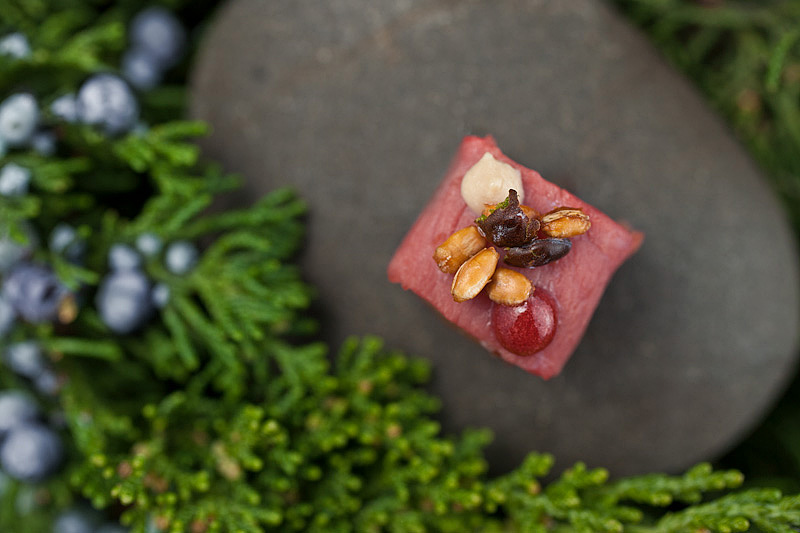
The poetry here involves a very thin sliver of Bison meat wrapped around a warm candied cylinder of Fuyu persimmon. The small bite is topped with tiny dots of cranberry sauce, walnut-cream pudding, crisp puffed pearl barley, and the skin of a fresh juniper berry. The bite is served on a very hot smooth stone, which is–at the table–placed onto a fresh bough of juniper. As the meat sears on the stone, the fragrance of the juniper is released, enveloping the bite in a heady, complex vapor of minty evergreeny awesomeness.
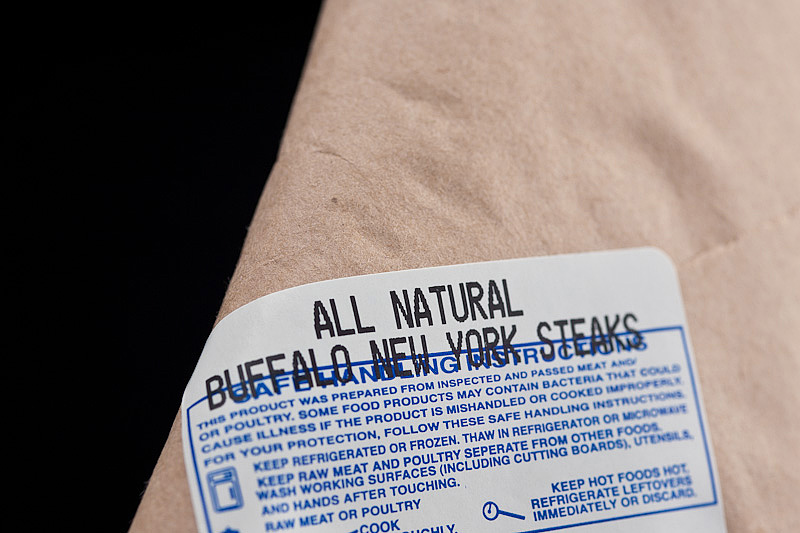
I started by tracking down some Bison at Golden Gate Meats over in the SF Ferry Building. They also had Veal Bones, which I used to make some veal stock for an upcoming dish. The bison had been cut into sirloin steaks, which was fine for what I wanted. I was surprised and a little worried when I realized after I bought it that it was labeled “buffalo”. A quick wikipedia search in situ though told me American Bison (which is often commonly referred to as American Buffalo) are one in the same. THE MORE YOU KNOW…
I also bought a cap of beef fat (well, ‘bought’ is a strong word. I asked if they had any and the butcher just chopped me off a hunk from a nearby ribeye and gave it to me. FREE FAT!). I brought this home and rendered it down, then packed the bison in a vacuum bag with the fat and cooked it en sous vide to medium rare.
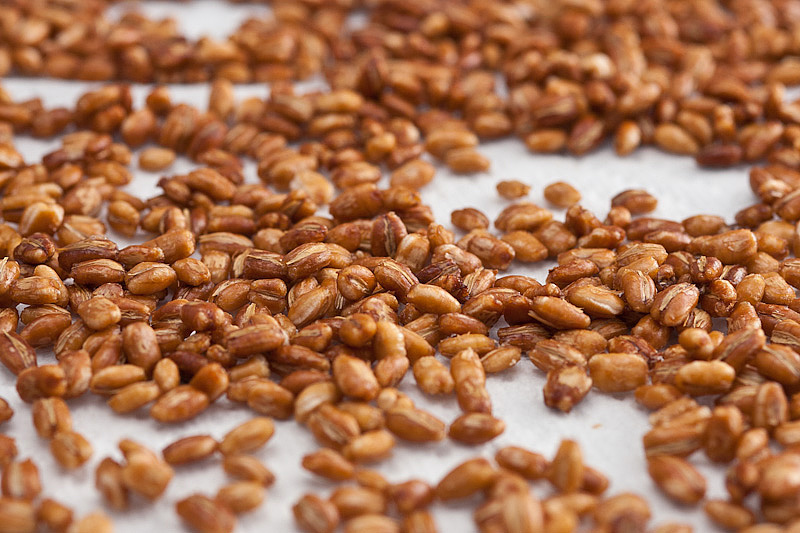
While that was cooking, I cooked some dried pearl barley in salted water until it was tender (it never got as tender as, say, risotto, despite me cooking it well longer than the recipe specified. I think I did it right though?). I let the barley dry on a few layers of paper towels, then fried it in very hot canola oil. After a few seconds in the oil, it puffs very suddenly and looks sort of like a mini Honey Smack. After draining these I tasted a few; they’re crispy and crunchy with a nice warm nutty flavor.
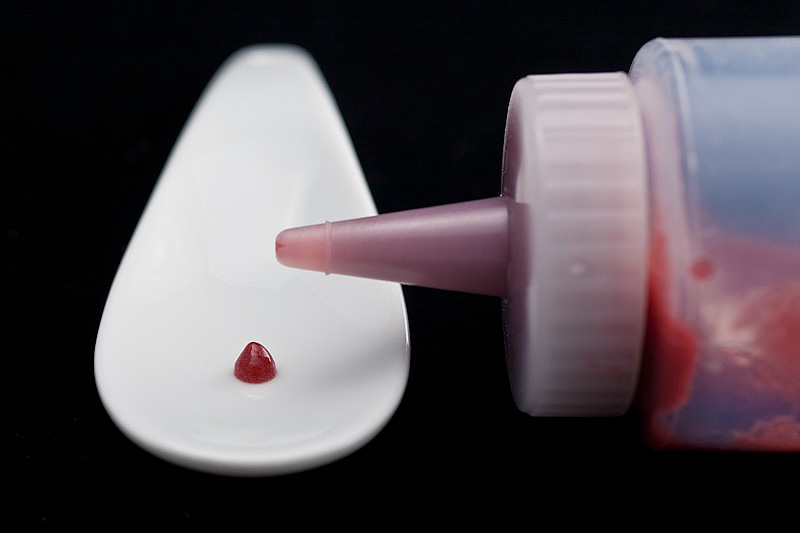
When I went to buy cranberries for the Cranberry Sauce bit of this, for some reason I kept thinking of–and wanting to try–strawberries. It just seemed like it would taste really nice, with the barley and other flavors, so I made a gametime switchup and bought a big punnet of strawberries. Cooking these down was extremely easy: just “cook the shit out of them”. I did this until almost no moisture remained; the strawberries become almost pastelike in consistency. I blended them and then strained them through a chinois into a perfectly smooth strawberry sauce.
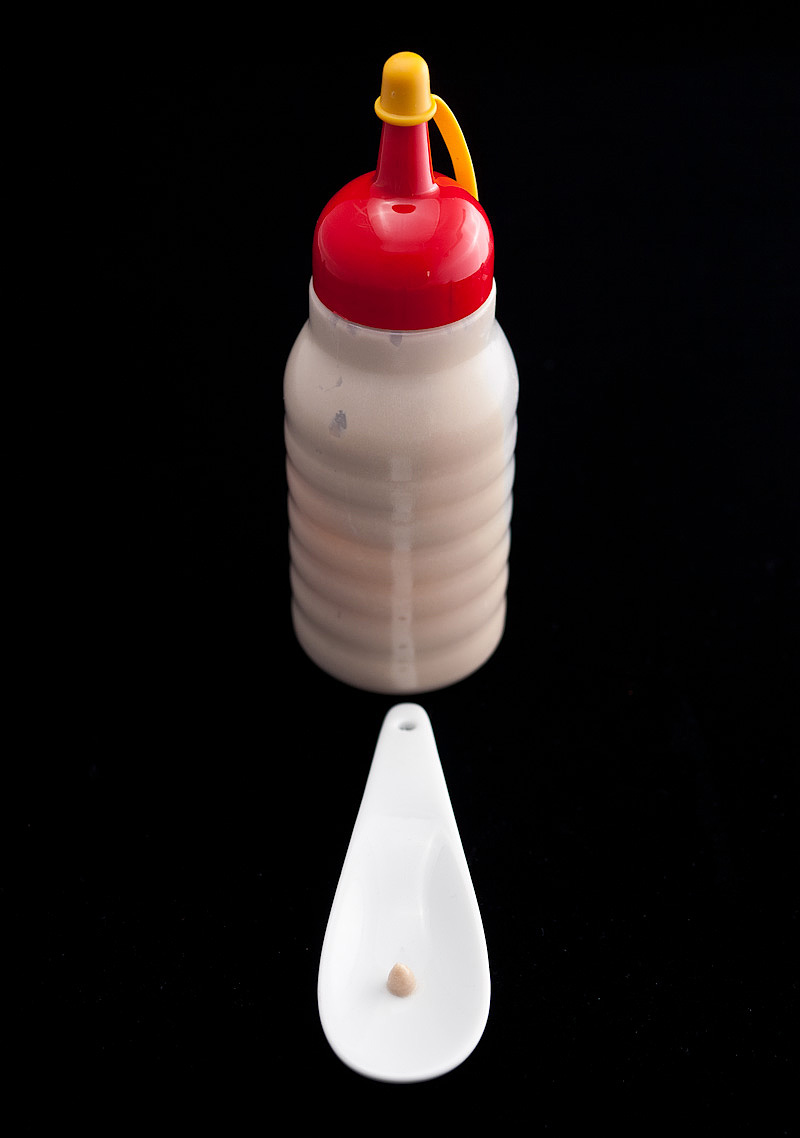
The one white powder used was Agar, and that was to help make a ‘walnut pudding’. This is made from toasting some walnuts and soaking them in milk overnight, then blending the mixture with some agar, letting it set, and shearing it to a puddinglike consistency.
I forgot to take photos of my persimmons, but these were cut equatorially into round slices, which were then simmered in a mixture of sugar and water until they were tender but not falling apart. I cut small cylindrical plugs from the slices using a round cutter, and held these at room temperature until everything else was ready to go.
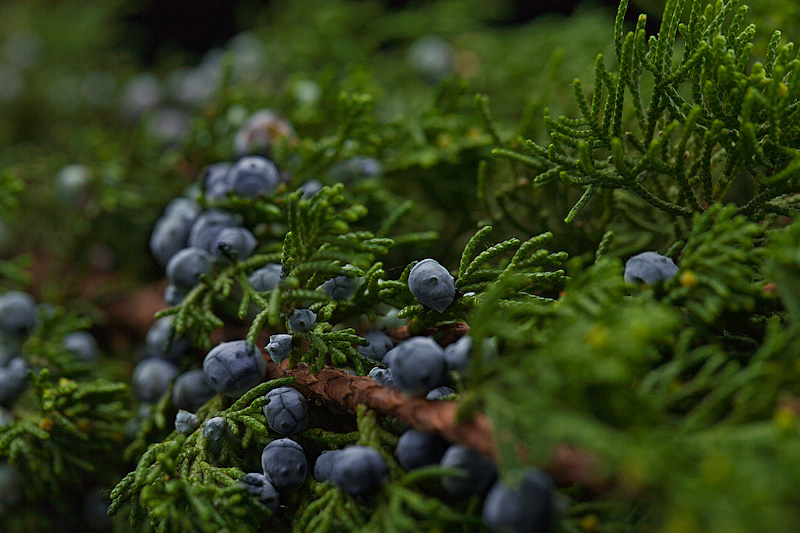
The last step was finding a few bushy, fragrant juniper boughs. I’m always a little thrown by being tasked with finding ingredients like this; clearly you can’t bang down to the grocery store and pick this up in the produce section. Our neighborhood, though, tends to be amazingly bountiful in this regard. I can remember first moving to the bay area and being put off by the ridiculous variety of plant life I saw everywhere…it looked like a weird mishmash of stuff with no real rhyme or reason, and I missed the homogeneity of, say, the oak woods behind our house in Kentucky, where there might be one odd walnut tree if you were lucky. But this project has given me a wild appreciation for botany, and I find I’m usually scanning streetsides trying to see how many plants I recognize. 3 years ago I wouldn’t have noticed or cared about the nasturtium, lavender, or various sages that grow on the curb in front of our apartment.
Sarah was walking around our area a few days before I made this, and I’d asked her to keep here eyes open for juniper trees. When I got home that night, she mentioned she’d seen several just a few blocks up from us. So the day I meant to complete this, I stepped out for a few minutes with some garden shears and a paper bag and scouted down some promising branches. When asking around at work what I should look for if I wanted to find a juniper tree, one coworker said “It’s easy. They smell like gin and have little berries on them.” He was totally right, though they don’t smell only of gin. The trees I found smelled of gin and a minty, piney, evergreeny sort of smell. Many of the boughs on one tree had little green berries on them; when I looked around a bit more, I saw other branches laden with deep purple berries just starting to ripen. The berries themselves are powerfully-scented; in previous dishes that have called for fresh juniper skins, I’ve always just used dried berries, thinking finding fresh berries would just be impossible. But having smooshed a few of the fresh berries on these branches (and used the skins in this dish), I can say there’s really no comparison. Dried berries have a bit of a one-note flavor, whereas the fresh ones are explosive with fresh wintery evergreen notes in addition to the gin-line taste I was familiar with.
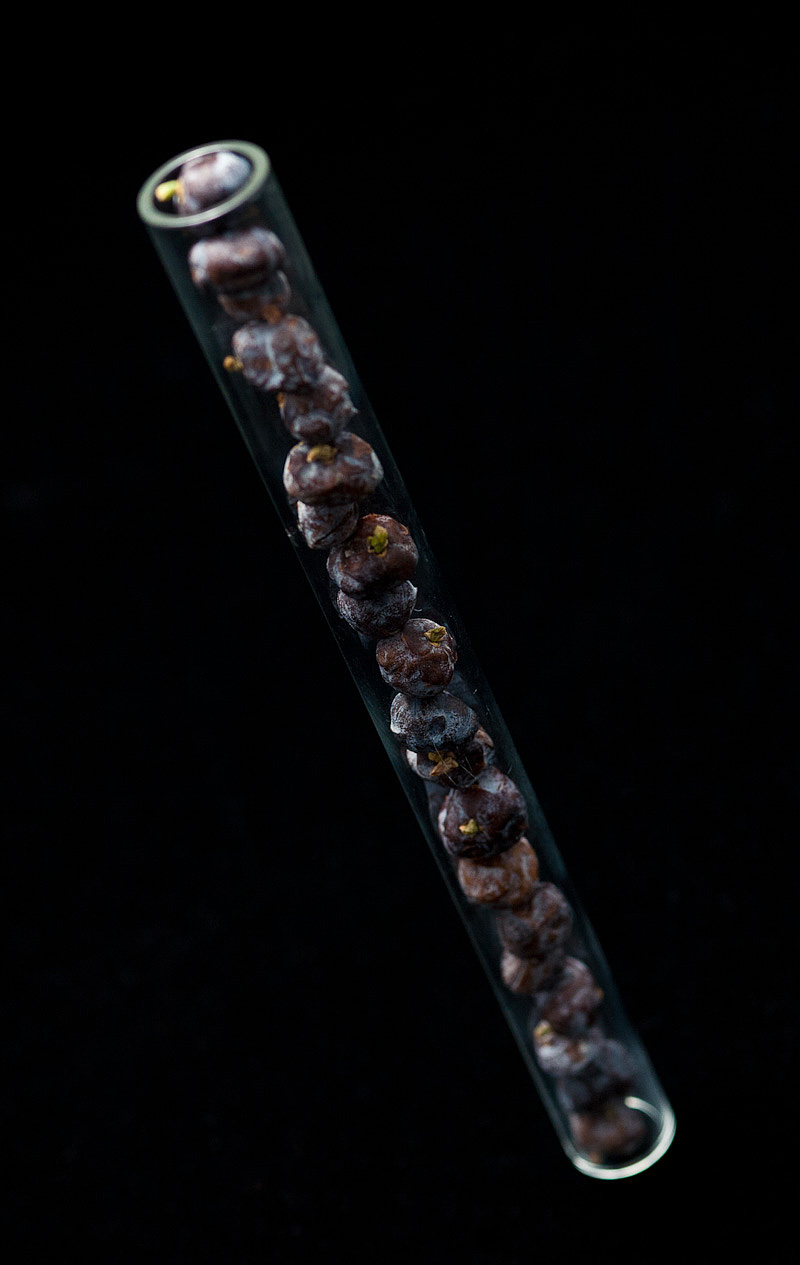
To assemble everything, I sliced the bison meat into thin strips and wrapped them around the persimmon plugs. I trimmed the ends so the assembly would be tidy, and seared the bottom ‘seam’ to get some char on the bison and help hold it in place. At the same time, I heated our oven to 500F and placed some small stones we found on a beach in New Zealand on the rack to let them heat up. I topped the bison bite with dots of the strawberry sauce, walnut puree, a few puffed barley grains, and the skin of a fresh juniper berry. This was placed on one of the hot rocks, which I then transferred to the juniper bough.
Within a few seconds, the searing meat and the evergreen vapor hung thick in our kitchen. It smelled…like standing in our yard during winter. Like cold and comfort at the same time. The branch is more ‘evergreen’ than ‘gin’ when heated like this. The bite itself was good; the meat still lacked a bit of the punch that I expected (and mentioned in the last post), so I plated another for myself and added a few small flakes of salt and pepper. On glancing at the photo in the book more closely, I see they do this exact thing (despite not mentioning it in the recipe. I get this; some steps are so fundamental that it’s hard to remember the need to articulate them, but on the flipside it’s also easy to overlook them when they’re omitted). This brought things to life quickly; the nutty flavor of the barley and walnut and the warm spice of the persimmon were lovely; the strawberry and juniper skin added a touch of brightness that accentuated the evergreen smell of the branch. The whole thing had a transportative quality that’s become much more appealing to me in its subtlety and artfulness than my original interest in magic white powders; the best word I keep coming back to to describe it is “poetic”.
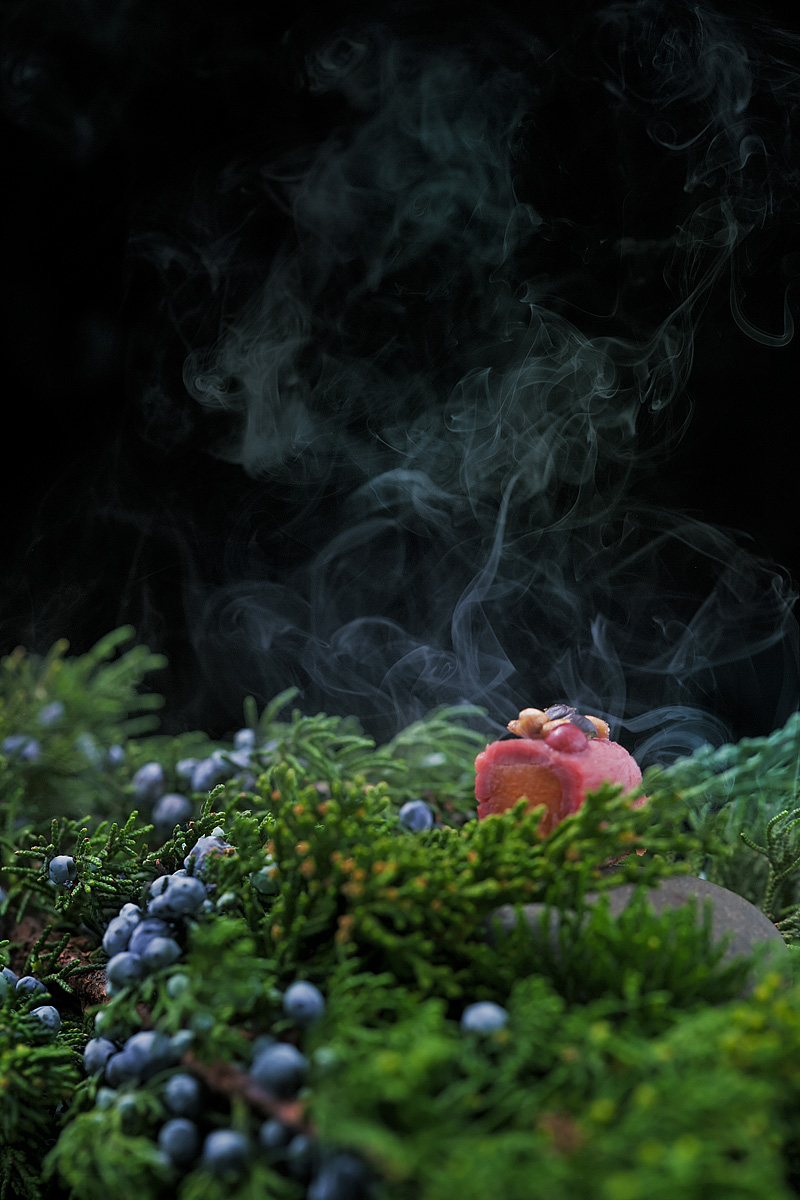
Super cool post, Allen! It’s reassuring to see that high-end “white powder”-type dining isn’t always about technique and chemistry. When I first heard about molecular gastronomy, I was pretty sceptical about it. I mean, sure it would be cool to have this crazy dining experience where you wouldn’t know what to expect, but I also thought that it would be too weird, alienating, and removed from what food was about for me. But your posts here, and this dish especially, have really gone a long way in showing just how thoughtful this food is.
And I’m totally going for a walk today to scope out some juniper trees. I’ve been playing with the idea of making a G&T macaron for ages now, and I never thought of “borrowing” a few sprigs from an actual tree. I hope there are some around the neighbhourhood here. Is the flavour that I’m looking for all in the berries? Do you think that I would get enough flavour out of them if I steeped some in heavy cream and then put together a ganache?
This is the dish I most remember from my meal (6 years ago) at Alinea. Oh, the smell. The way the meat just melted in my mouth. I was transported in that bite.
Thanks for bringing me back again.